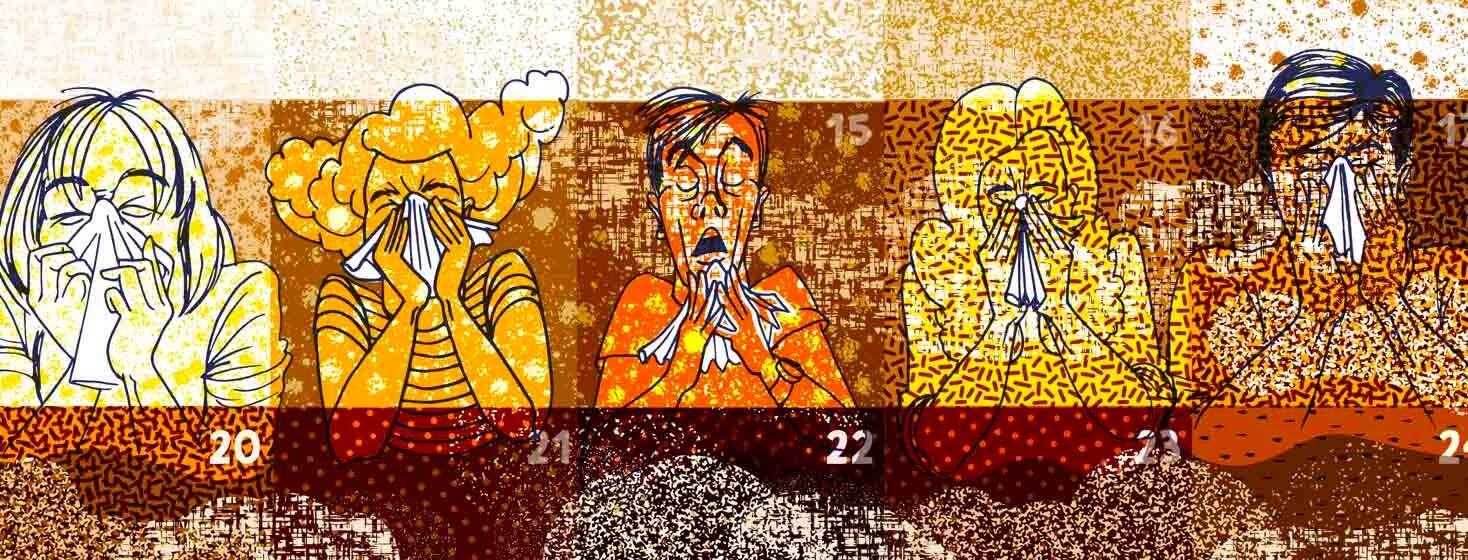'Tis the Season for Cedar Fever
When people think about allergy season, spring and summer usually come to mind. It seems that's when people are the most sneezy and stuffy. However, fall and winter are also notoriously bad for people with environmental allergies who live in certain parts of the United States, thanks to mountain cedar pollen.
What is mountain cedar pollen?
Pollen from cedar and Ashe juniper trees is commonly called mountain cedar pollen. The pollen is found in the cones on the tree. Several cones are blown off the tree as fall and winter winds pick up. As they fall off the tree simultaneously, the cones release a yellow or orange cloud of pollen into the air. This is also called "cedar fever."1
Since the pollen is small and light, it becomes airborne easily. It can travel hundreds of miles away in the wind. It is easily inhaled deep into the lungs, causing allergy and allergic asthma symptoms.
Where is mountain cedar pollen found?
Luckily, mountain cedar pollen is not found everywhere in the US. It is found in Arizona, Arkansas, Missouri, New Mexico, Oklahoma, and Texas. Texas has one of the largest populations of cedar trees. The pollen is heaviest during December, January, and February. However, cedar fever season usually starts in November and can last through March.1
What are the symptoms of cedar fever?
Mountain cedar pollen can cause the usual asthma symptoms. This includes a stuffy and runny nose, itchy and watery eyes, and sneezing. Cedar fever may also leave you feeling tired and cause headaches, plugged ears, difficulty smelling, or a sore throat.
Despite its name, an actual fever is not typically a symptom. These symptoms can be intense and may also be caused by the flu, COVID-19, or other respiratory viruses. Talk with your doctor if you have any of these symptoms.
How to manage a mountain cedar allergy
If you spend time in a state with mountain cedar pollen, the first step to proper management is getting allergy tested. Knowing exactly what you are allergic to, where the allergens are found, and which season they bloom can help you develop a targeted treatment plan. Treatment may include antihistamines, allergy shots, nasal corticosteroids, saline rinses, and trigger reduction.
Allergy trigger reduction tips
Some allergy trigger reduction strategies can include:
- Checking the daily pollen forecast at airnow.gov
- Plan outdoor activities in the early morning or evening when pollen counts are lower
- Wear a mask when outdoors and avoid yardwork when possible
- Exercise indoors.
- Rinse your car if you see yellow or orange pollen. Keep windows closed and use the recirculate air mode for heat and air conditioning
How to keep pollen from accumulating indoors
There are various ways to reduce the number of allergens indoors. Some include:
- Using air purifiers
- Damp dust with a microfiber cloth and vacuum with a HEPA filter vacuum regularly
- Mop hard floor surfaces instead of sweeping
- Remove shoes when entering the house
- Bathe or wipe pets often, even if they live inside
- Change the air filters in your HVAC system as recommended by the manufacturer
- Keep the windows closed when you can
Foods that can cross-react with mountain cedar pollen
If you have a pollen allergy, certain raw foods may cross-react with mountain cedar and cause oral allergy syndrome. Apples, cherries, bell peppers, kiwi, paprika, tomato, beef, and yeast have the potential to cross-react. You can either cook the foods before eating them or avoid them altogether.
Have you experienced mountain cedar pollen allergy symptoms? Share in the comments below.

Join the conversation